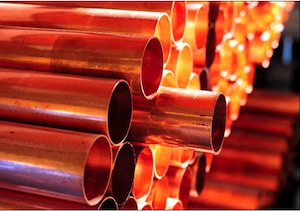How to help customers choose right Cortec corrosion inhibitor
Corrosion comes in many different forms with many different solutions, which is why it is important to be aware of the multiple metal types in need of protection. Someone who does not take this into account may do more harm than good by trying to inhibit corrosion with the wrong chemistry.

Key 1: Know What Is Inside Your Application
Whenever a manufacturer, project owner, or other individual seeks a corrosion solution, it is imperative to ask what types of metals are in the system. This is because yellow metals need different corrosion inhibitors than ferrous metals (e.g., steel), and because some ferrous rust inhibitors are actually aggressive to yellow metals. A small mistake of not realizing that a copper sensor or other yellow metal is present inside a tank treated with corrosion inhibitors aggressive to yellow metals can cause serious problems for the end user and the consultant who prescribed the product, leaving everyone worse off than if they had done nothing. Some common examples of equipment containing yellow metals are electrical cabinets and heat exchangers. Countless others exist throughout the industrial world. It is therefore part of the user’s due diligence to verify whether any yellow metals are present before applying treatment.
Key 2: Know What Is Surrounding Your Application
It is also important to know what is on the outside of the application. In other words, how corrosive is the surrounding environment? Yellow metals like brass and copper are typically more resistant to corrosion than ferrous metals and are often used for this reason. However, extra protection may be needed for harsh environments such as those experienced by new copper wires and tubing being shipped overseas, electrical panels and control boxes installed at paper mills or wastewater treatment plants, and copper heat exchanger tubing in refineries with high sulfuric gases. In short, more corrosives raise the risk of corrosion and warrant additional protection.
Key 3: Know What the Product Is Like
The next step is to match the corrosion inhibiting product to the application. First and foremost, verify the product is not aggressive to yellow metals. A close second priority is to find a product that actively protects yellow metals. Fortunately, a wealth of options exists, as most Cortec VpCI materials include multi-metal protection unless otherwise noted. Third, it is important to match the product characteristics to the type of application. Some great examples are as follows:
- CorShield VpCI-146 Paper for protection of copper parts and wire during shipment
- VpCI-105 and VpCI-111 Emitters for protection of electrical cabinets (with built-in installation date stickers)
- ElectriCorr VpCI-239 for cleaning and protection of electrical contacts in ventilated cabinets
- Cooling Loop Gator for cooling tower layup
- VpCI-308 Pouch for protection of large voids up to 35.3 ft³ (1 m³) containing yellow metal components
- VpCI-126 Bags and BioPad® for easy packaging and shipment of yellow metal goods
- Corrosorber cups for absorbing hydrogen sulfides in oil and gas or wastewater environments
Get Ready for Successful Yellow Metals Protection
Though yellow metal are known for their greater resistance to corrosion, a place still exists for their protection. Knowing the metals involved, the degree of corrosion hazards, and the specific benefits various corrosion solutions have to offer are the first steps to successful corrosion protection of yellow metals. Contact Cortec today for further assistance choosing a yellow metal corrosion inhibitor.













